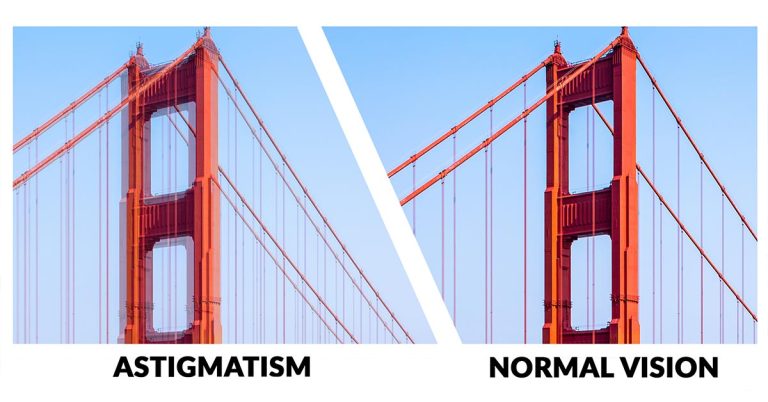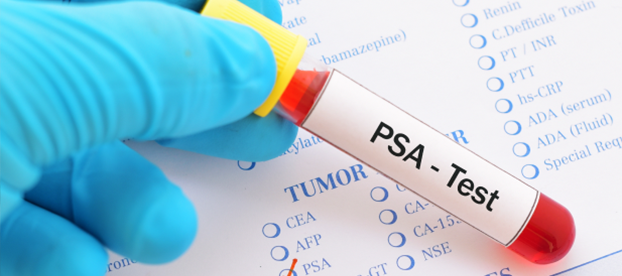Astigmatism
Learn more about Astigmatism - what it is, its causes, symptoms, diagnostic tests, and treatments.
Contents
What Is Astigmatism?
Astigmatism is a common eye condition that occurs when the cornea or lens of the eye has an irregular shape. In a normal eye, the cornea and lens are smooth and evenly curved, helping to focus light rays sharply onto the retina at the back of the eye. However, in astigmatism, the cornea or lens is curved more in one direction than the other, leading to distorted or blurred vision.
This irregular curvature can cause light entering the eye to be focused unevenly, leading to a refractive error. Astigmatism often occurs in combination with nearsightedness (myopia) or farsightedness (hyperopia).

Causes
Astigmatism may develop at any point of life. Several factors may contribute to its development such as:
- Genetics – Astigmatism often has a hereditary component. If the parents or other close family members have astigmatism, the children may be more likely to develop it.
- Eye injury or surgery – An injury to the eye or certain types of eye surgery can alter the shape of the cornea and lead to astigmatism.
- Keratoconus – This is a progressive condition in which the cornea becomes thinner and bulges outward, causing astigmatism.
- Other factors include abnormal growth of the eye, and changes in the structure of the lens such as those associated with presbyopia may contribute to astigmatism.
Symptoms
Astigmatism may cause a variety of symptoms related to vision distortion. Common symptoms of astigmatism include:
- Blurred or distorted vision.
- Eyestrain.
- Headaches that may come from prolonged visual tasks, such as reading or using a computer.
- Squinting.
- Double vision.
- Difficulty seeing at night or in low-light conditions.
- Distorted or wavy vision.
Degrees Of Astigmatism
Astigmatism is typically measured in diopters (D), which represent the unit of refractive error. The measurement is typically expressed in negative or positive numbers, along with an axis that indicates the orientation of the astigmatism. The degrees of astigmatism refer to the axis or direction of the irregular curvature in the eye.
Classification | Degree |
Mild | < 1.00 D |
Moderate | 1.00 to 2.00 D |
High | 2.00 to 4.00 D |
Extreme | > 4.00 D |
Diagnostic Tests
- Visual Acuity Test – Uses the Snellen chart to measure visual acuity. During this test, patients read letters or symbols from a distance to determine how well they can see at various distances.
- Refraction Test – Involves looking through a phoropter, a device with different lenses, to determine the most accurate prescription for corrective lenses. The optometrist will ask the patient to compare different lens options to find the combination that provides the clearest vision.
- Keratometry – Measures the curvature of the cornea, which is crucial for identifying astigmatism. The keratometer shines a ring of light onto the cornea, and the reflection is analysed to determine the corneal curvature.
- Retinoscopy – Uses a light beam and a series of lenses to objectively estimate the refractive error. This helps determine the prescription needed for corrective lenses.
- Autorefractors and Aberrometers – These automated instruments use sensors to measure the refractive error of the eye quickly.
- Corneal Topography – A test that creates a detailed map of the cornea’s surface, helping to identify irregularities in its shape.
- Slit-Lamp Examination – A slit lamp allows the eye care professional to examine the structures of the eye, including the cornea, lens, and retina.
Treatments
Several effective treatments are available for myopia, ranging from non-invasive methods to surgical procedures.
- Eyeglasses – Prescription eyeglasses are the most common and effective way to correct astigmatism. The eyeglass lenses are specifically designed to compensate for the irregular curvature of the cornea or lens, providing clear vision.
- Contact Lenses – Toric contact lenses are specially designed for astigmatism. They have different powers in different meridians of the lens to address the uneven curvature of the eye. Soft toric lenses are popular for mild to moderate astigmatism, while rigid gas permeable (RGP) lenses may be recommended for higher degrees of astigmatism.
- Orthokeratology (Ortho-K) – Ortho-K involves the use of specially designed gas permeable contact lenses worn overnight to reshape the cornea temporarily. This allows individuals to enjoy clear vision during the day without the need for glasses or lenses. Ortho-K is often used for mild to moderate myopia but can also have some effect on astigmatism.
- Refractive Surgery – Refractive surgery or laser eye surgery, such as LASIK (Laser-Assisted In Situ Keratomileusis), LASEK (Laser-Assisted Subepithelial Keratectomy) PRK (Photorefractive Keratectomy), and SMILE (Small Incision Lenticule Extraction) reshapes the cornea to correct refractive errors, including astigmatism. These procedures are suitable for individuals seeking a more permanent solution to their vision problems.
Contact Us For Diagnostic Tests And Treatment
Health365 has partnerships with trusted eye care specialists, clinics, and hospitals in Singapore. Contact us through the button below to inquire.
Related Articles
Dr Owen Hee – Ophthalmologist In Singapore
- November 4, 2024
Eye Screening In Singapore, Treatment, And Prevention
- August 5, 2024
Guide To Finding The Best Eye Specialist In Singapore
- August 5, 2024
Symptoms That May Indicate You Have An Eye Disease
- August 5, 2024














